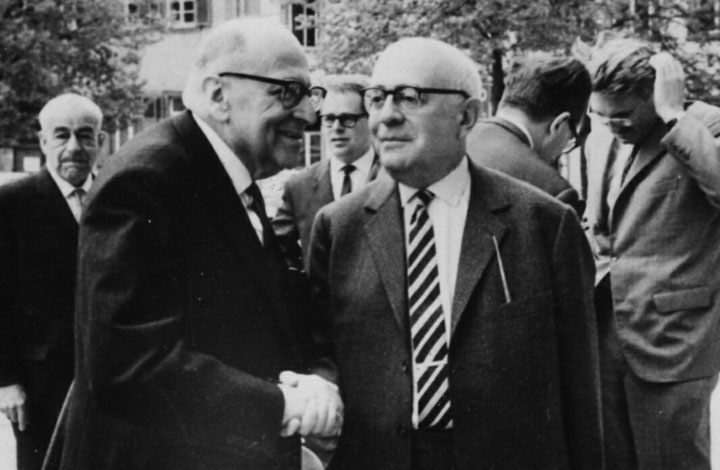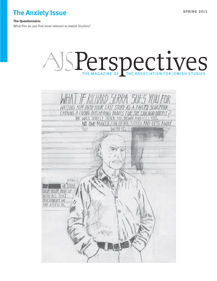
Sigmund Freud's Moses and Monotheism (1939) was the urtext in this discussion. But Freud had first speculated on the unconscious origins of anti-Semitism in a footnote in the case of "Little Hans" (1909). There he suggested it was rooted in the fear of castration anxiety aroused by circumcision. The footnote intimated a shift in Freud's oeuvre that took shape with Totem and Taboo in 1912, where he moved from a focus on individual psychology to mass psychology, generalizing to groups and civilizations his exploration of identity construction as a result of the sublimation of incestuous, parricidal, and murderous wishes. With the backdrop of World War I, he began to explore the relationship to death and narcissism at work in group psychology. His writing on the "Uncanny" (1919), where he examined the stranger who is at the same time "secretly familiar" and who might therefore be constructed as the "internal enemy" also proved central to his analysis of anti-Semitism. In The Problem of Anxiety (1926), he analyzed displeasure (Unlust) that arises in situations of perceived danger, whose psychic origins are traced back to the "trauma of birth," where the helplessness and sense of loss from leaving the womb and with it the threat of "non-gratification of needs" derive from the loss of the mother. Freud noted that this sense of loss was replayed in situations of castration anxiety.
Such insights are all brought together in Freud's interpretation of Moses and Monotheism. In the work, he discussed the oedipal relationship between the "religion of the father" (Judaism) and the "religion of the son" (Christianity). He connected the claim of Jewish choseness and his analysis of circumcision as the font of anti-Semitism. And he evoked the notion of the "narcissism of minor differences," which leads to the rigidification of group boundaries and the domination of group identity in terms of the superego. Bringing this all together, Freud suggested that anti-Semitism was the product of seething resentment at Jews by Christians. Christians were often first converted at the end of a sword and their core narrative in the New Testament was a set of stories about Jews. Christians consequently unconsciously begrudged Jews for being the source of the core civilizational moral precepts, whose ideals all assent to but that prove difficult for individuals to uphold given their instinctual drives. Freud's understanding of anti-Semitism—provoked by (oedipal) conflict—thus coupled fear and anxiety along with resentment, frustration, and displacement as the driving emotions in the psychic life of anti-Semitism. His insights would have an enduring influence.
Freud's analysis surely inspired Maurice Samuel's once-important account of anti-Semitism, The Great Hatred (1940). In lecture after lecture that made up the book, Samuel hammered home his thesis that "Christophobia" was the underlying cause of anti-Semitism: "Jews are loathed as the Christ-givers, the creators or representatives of the non-force principle in human relations," he thundered. The great Catholic intellectual Jacques Maritain would pick up on Samuel's formulation of Freud's thesis, giving his theory a distinctly Christological spin in his interventions against anti- Semitism during the Second World War.
Following Maritain's Catholic theological spin, Talcott Parsons gave it a sociological bent. Parsons's effort, "The Sociology of Modern Antisemitism," was included in a lengthy collection, Jews in a Gentile World: The Problem of Antisemitism, edited by Isacque Graeber and Steuart Henderson Britt, published in 1942. Parsons's contribution was a major new theoretical understanding of the problem. His key claim in "The Sociology of Modern Antisemitism," is that "the most important source of virulent anti-Semitism is probably the projection on the Jew, as a symbol, of free-floating aggression, springing from insecurities and social disorganization." Anti-Semitism results from modern social dislocation, explained Parsons. It resulted from what Ferdinand Tönnies discussed as the shift from the Gemeinschaft to the Gesellschaft—leading to the breakdown of the social system of the close-knit community, which had clearly defined values, goals, and routines. The sociological processes of modernization—including urbanization, industrialization, the debunking of traditional values and ideas, and the expansion of mass means of communication—all result in what Parsons termed the "large-scale incidence of anomie in Western society."
Parsons borrowed the notion of anomie from Durkheim's study on Suicide. Anomie is a state of rootlessness, disconnection, and social alienation. It results from the breakdown of norms or cultural expectations, which conflict with the social realities attendant upon the transformations of modernity. Parsons claimed that the result of anomie is social and psychological insecurity, frustration, and resentment, often expressed as aggression. The more heightened the anxiety, the more "free floating" the aggression. In these circumstances, people act out this frustration and insecurity on a symbolic object. In the case of modern Europe, this symbolic object was the Jew, who was to be found "everywhere and nowhere" as Hannah Arendt later put it.
With the Holocaust ramping up, the leading lights of the Frankfurt school also picked up on Freud's insights. Their most ambitious effort as a group was the Studies in Prejudice series, whose five books brought together Weberian sociology, Marxism, and psychoanalysis. First published in 1950, they made an important contribution to the study of racism and discrimination. Perhaps the most ambitious undertaking of the series was The Authoritarian Personality, a collaborative work led by Theodor Adorno. Institutionally The Authoritarian Personality was a joint undertaking of the Berkeley Public Opinion Study and the Institute of Social Research, combining Berkeley's experimental and empirical academic social psychology with the Frankfurt school's sociological, psychoanalytic, and philosophical bent. In his methodological chapter on "Types and Syndromes" Adorno justified the drive to locate the etiology of the "authoritarian personality"—and its correlate types: the anti-Semite, the fascist, the xenophobe. All modern social processes tended toward standardization and mass production, Adorno maintained, including the personality types of individuals. Only by identifying the social types of the authoritarian personality could the all-pervasive thrust toward classification in modernity be challenged. Social types were the products of social rubber stamps.
How these rubber stamps were constituted as socially produced phenomena was the basis of Adorno's specific anthropology of anti-Semitism in the three substantive chapters he authored in The Authoritarian Personality. Adorno concentrated on the social production of the stereotype, which is itself linked to psychological needs that are created by the cold, alienated world of modernity. The psychological motor of stereotypes is projection. The key mechanism that prompts it is the defamation of other groups as a way to code one's own status. The social functionality of anti-Semitism is consequently that it serves as a compensation for social alienation. Also key for Adorno was that anti-Semitism serves as a means to personalize an explanation of the complicated contradictions that engender social and psychological discomfort and unrest that are the outcome of alienation. The ineloquence or confusion of social life can be unraveled in an instant through a set of stock images. Going deeper into the Freudian psyche, Adorno suggested that stereotypes screen the internal contradictions of individuals—their inner conflicts between superego and id. Stereotypes are the externalization of these inner conflicts, which are themselves the internalization of the contradictions of global capitalism. This is why many positive stereotypes are closely linked to their shadow side. For example, the contention that Jews are solidly entrenched in family values has its double in the assertion of Jewish clannishness; Jewish intelligence is coupled to Jewish manipu- lation and power; the Jews as law-abiding to materialism and spiritual lifelessness.
Unlike the Frankfurt school, Sartre's major analysis of anti-Semitism preferred an existential psychoanalysis to a Freudian- inspired model. Réflexions sur la question juive (Anti-Semite and Jew) was written in the fall of 1944 between the liberation of Paris and the liberation of Auschwitz, and published in 1946. Since then it has remained a forceful examination of Jewish subjugation, explored as a dialectic of recognition between Self and Other. In French discussions, it became the urtext to postwar debates about anti- Semitism and the Jewish condition. For Sartre, the key affective driver is once more anxiety, but his understanding is existential, not psychoanalytic. Sartre focuses less on the unconscious and more on human freedom than Freud did.
The Réflexions is an existentialist analysis of the Jewish Question, whose core claim is that the anti-Semite is a man of "mauvaise foi" (bad faith or self-deception). "Antisemitism, in short, is fear of the human condition," Sartre avows. In doing so, Sartre picked up on a key distinction introduced by Martin Heidegger in his existentialist opus Being and Time (1927) between fear and anxiety. Fear, Heidegger insisted, has a fixed object—we fear the specific thief who assaults us, for example. Anxiety is free-floating; it is provoked by the groundless of our being. When we tune in to our contingency, it manifests bodily as nausea: the taste of our freedom, according to Sartre. Anti-Semitism, for Sartre, was an inauthentic response to man's situation in the world and being-with-others. While he wrote that anti-Semitism is animated by "fear of the human condition" Sartre clearly means that anti-Semites are deeply anxious about the constitutive limits of the human condition (change, death, and a world shared with Others, who call into question one's essence and values). Denying their own freedom, they justify themselves through their typologies of the degenerate Jewish Other. As such, they avoid responsibility. They flee from it by focusing their passions on "the Jew," the free-floating symbol of decadence, decay, and degeneration that must be eliminated to redeem the modern world.
Hannah Arendt offered her interactionist account of modern anti-Semitism partly as a response to her unfavorable assessment of Sartre's existentialism as well as the Frankfurt school's socio-psychoanalytic approach. Arendt wrote in the preface to the Origins of Totalitarianism (1951), "even a cursory knowledge of Jewish history . . . should be enough to dispel this latest myth in these matters . . . somewhat fashionable in intellectual circles after Sartre's 'existentialist' interpretation of the Jew as someone who is regarded and defined as a Jew by others." What explained modern anti-Semitism for Arendt was the role of the Jews in the development of modernity. "Modern antisemitism," she asserted, "must be seen in the more general framework of the development of the nation- state, and at the same time its source must be found in certain aspects of Jewish history and specifically Jewish functions during the last centuries." In taking this interactionist turn, Arendt would help to launch the dominant approach to analyzing anti-Semitism after her work: the turn to history. But in focusing on historical contexts, the affective elements of anti-Semitism so pronounced in the early theoretical approaches to anti-Semitism receded into the background or were absorbed into the narratives developed by historians. Her interactionist and historicist approach has dominated the research on anti-Semitism in the last fifty years. For all it has contributed to our understanding of the social conditions that produce anti-Semitism, historians have sidelined the emotions. Perhaps it is time for a return of the repressed.


 Jonathan Judaken is the Spence L. Wilson Chair in the Humanities at Rhodes College. He is the author of dozens of academic articles on the history of existentialism, the critical philosophy of race (anti-Jewish and anti-Black), critical theories of anti-Semitism, and post-Holocaust French Jewish thought. He has written Jean-Paul Sartre and the Jewish Question: Anti-antisemitism and the Politics of the French Intellectual (Nebraska, 2006), edited Race After Sartre: Antiracism, Africana Existentialism, Postcolonialism (SUNY 2008) and Naming Race, Naming Racisms (Routledge 2009), and co-edited, Situating Existentialism: Key Texts in Context (Columbia 2012). He is completing a monograph entitled, Critical Theories of Anti-Semitism: Confronting Modernity and Modern Judeophobia. Judaken has published in Ha’aretz and the Huffington Post and he hosts a monthly National Public Radio program, “Counterpoint,” which focuses on academic and intellectual contributions to discussions in the public sphere.
Jonathan Judaken is the Spence L. Wilson Chair in the Humanities at Rhodes College. He is the author of dozens of academic articles on the history of existentialism, the critical philosophy of race (anti-Jewish and anti-Black), critical theories of anti-Semitism, and post-Holocaust French Jewish thought. He has written Jean-Paul Sartre and the Jewish Question: Anti-antisemitism and the Politics of the French Intellectual (Nebraska, 2006), edited Race After Sartre: Antiracism, Africana Existentialism, Postcolonialism (SUNY 2008) and Naming Race, Naming Racisms (Routledge 2009), and co-edited, Situating Existentialism: Key Texts in Context (Columbia 2012). He is completing a monograph entitled, Critical Theories of Anti-Semitism: Confronting Modernity and Modern Judeophobia. Judaken has published in Ha’aretz and the Huffington Post and he hosts a monthly National Public Radio program, “Counterpoint,” which focuses on academic and intellectual contributions to discussions in the public sphere.